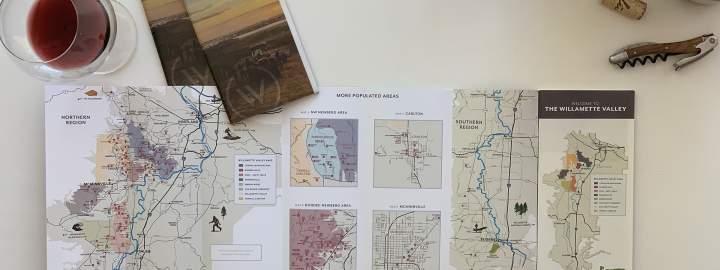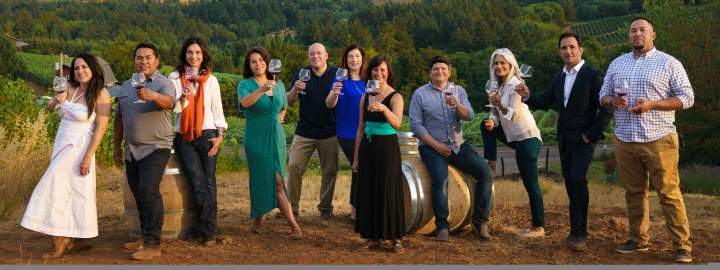Sparkling Wine
Sparkling wine has a long history in the Willamette Valley, with producers like Argyle, Soter and R. Stuart believing in bubbles long before you could find gyropalettes and Champagne flutes throughout the region. But it's safe to say Willamette Valley sparklers are having a moment right now. Browse sparkling wine producers below.
What is sparkling wine?
Sparkling wine is defined in the United States as grape wine made effervescent with carbon dioxide resulting solely from the fermentation of the wine within a closed container, tank, or bottle. Here in the Willamette Valley we never call our sparkling wine "Champagne" because we respect and support Champagne's legally protected status as France's most legendary sparkling wine region. We make sparkling wine, or "bubbles" more colloquially, and might use one of the following terms to be more specific:
Méthode Champenoise / Traditional Method / Champagne-style / Méthode Traditionnelle: These terms indicate that the sparkling wine was made in the style of Champagne (but geographically outside of Champagne and its jurisdiction). Chiefly, that means those lovely bubbles come from a secondary fermentation that occurred in the very same bottle you're popping when you drink the wine. Notes of brioche and fresh cream are the signature element, thanks to extended contact between the wine and its lees (post-fermentation yeast cells). Here's a great guide to the many steps involved in traditional-method sparkling wine.
Crémant: This is a category of traditional-method sparkling wine found throughout France that, on its own, is not associated with a legally protected geographic region. It's usually bottled with slightly lower pressure than Champagne. You'll occasionally find it in the Willamette Valley, especially at wineries with a French connection.
Martinotti Method / Charmat Method / Tank Method: These terms are less widely recognized in the United States than in the country that made them famous––Italy, with its dazzlingly popular Prosecco––but not unheard of in the Willamette Valley. With this method of making sparkling wine, the secondary fermentation occurs in a closed tank rather than in the bottle. It is often favored when using highly aromatic grapes because it helps preserve their bright, fruity flavors. Why the two seemingly unrelated names? A long-standing dispute between the French and the Italians over who should get credit for it. We learned our lesson about poking that bear.
Pétillant Naturel / "Pét-Nat": This increasingly popular style takes its name from a French term meaning "naturally sparkling," because it is bottled during primary fermentation and derives its carbonation from sugar in the grapes themselves rather than the customary sugar addition used in traditional-method sparkling wine to provoke a secondary fermentation. It can be thought of as a simpler and more old-school (the French call it "méthode ancestrale") technique for producing sparkling wine intended for early consumption rather than long-term cellaring.
Blanc de Noirs: This term means "white from black" and denotes sparkling wine made from red ("black") grapes. Traditional Champagne grapes are Pinot noir, Chardonnay and Pinot Meunier, all grapes that call the Willamette Valley home, and Blanc de Noirs is typically made from Pinot noir (but you'll find Gamay, Pinot Meunier and other red grapes, too!).
Blanc de Blancs: You guessed it––this means "white from white" and means the sparkling wine was made with white grapes only. Chardonnay is the most common, but Riesling, Grüner Veltliner and other varieties can be found in Willamette Valley Blanc de Blancs.
Did you miss our Bubbles Masterclass with Katherine Cole, Chris Fladwood of Soter, Rollin Soles of ROCO, and Rob Stuart of R. Stuart & Co? View the recording here!









